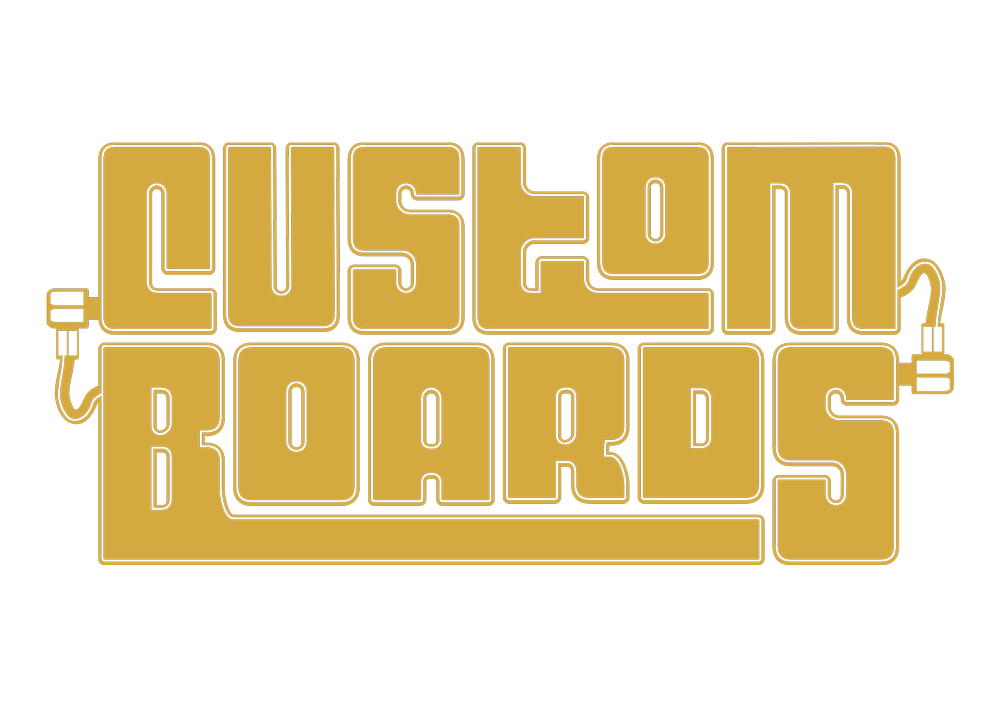Attaching patch cables to the effects
Even though the patch cables will later be installed using Custom Boards Safety Clips, we can already prevent many little problems by attaching patch cables to the effects correctly.
All cables should be installed in such a way that there is no pull away from the pedals. If you turn the patch cable along its longitudinal axis, you can put a little twist on it, and plug it in. Now the patch cable will either want to pull the plug up, down or towards the pedal, but never away from the jack.

This is the single most important point for well-functioning patch cable connections. A well thought-out signal routing, and taking into account physical tensions within the cables, along with neat installation, will make sure no patch cable pops out of a pedal by accident. Because you’ve made all the patch cables yourself and tested them with a multimeter, your pedalboard will be extremely rugged and reliable.
Cable connection order:
1) Power supply cables
Installing the power supply cables first will leave the heavier patch cables to push them down, keeping them in place on top of the pedalboard frame.
Short PSU cables are used for effects that are close to the power supply, and longer cables go to the pedals further away. Later on we will attach these neatly to the frame. For now they can be left hanging loose, as long as the PSU cables are routed along the frame’s bars. It’s no problem if the cables are a little too long.

2) Patch cables
Plug the patch cables into the pedals according to your tape markings. Leave the masking tape on for the moment. Later on we will attach the cables to clips on the underside of the frame, so that most of the cable itself stays out of view.

3) MIDI and control cables
If some of your digital effects are connected with MIDI-cables, or you use an expression pedal with stereo cables, the required cables will be plugged in next. Their connectors – as well as the visible parts of their cables – will rest on top of the patch cables.

4) The cable snake
The cable snake comes last and is placed on top of all other cables. Connect the audio cable to the last effect, and plug the AC-power connector into the power supply.

Plug the other end into the amp’s input and AC outlet, respectively.
Make sure your amp and your board are connected to the same AC feed. Now you can look at your pedalboard springing to life. Note that some pedals’ default setting can be “off”, when they’re powered up.
*****
If you have purchased all the parts and components but get a feeling that you might not be up to the task after all, we can make your pedalboard for you, using the components you have bought from us. Don’t worry, we won’t let anything go to waste.



